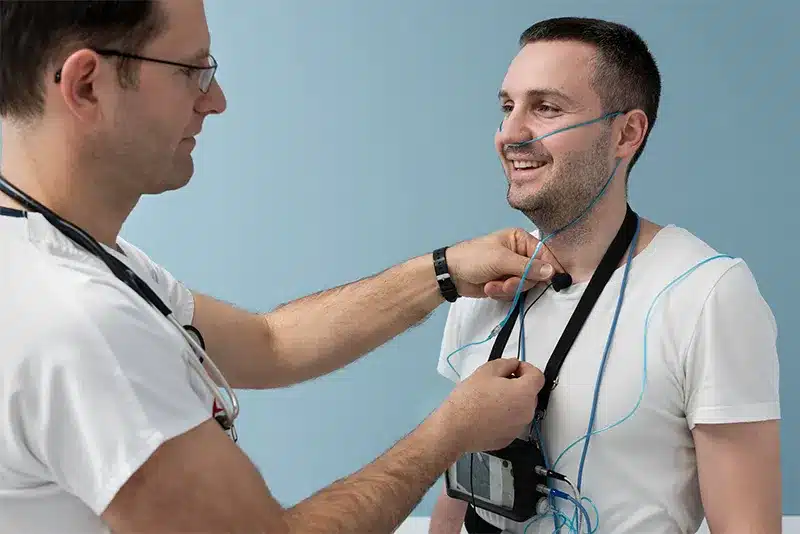Excessive Daytime Sleepiness / Hypersomnia / Narcolepsy
Hypersomnia or Narcolepsy Specialist in Colorado
What is excessive daytime sleepiness?
Excessive daytime sleepiness or hypersomnia refers to a persistent feeling of drowsiness despite adequate or prolonged nighttime sleep. People with hypersomnia struggle to stay awake during the day and may take long naps without feeling refreshed. This can significantly impact daytime functioning, work, and social activities . It can be a symptom of various medical conditions including sleep apnea, narcolepsy, depression or medication side effects.
Symptoms:
-
Feeling the need to nap frequently
-
Falling asleep unintentionally during activities like watching TV or driving
-
Difficulty waking in the morning
-
Mood changes (irritability, depression, anxiety)
-
Long sleep duration (more than 10-12 hours)
-
Cognitive impairment (memory issues, trouble concentrating)
-
Difficulty staying awake in meetings or class
-
Feeling sluggish and tired even after adequate sleep or nap
-
Automatic behaviors (performing tasks without awareness)

What are the types of hypersomnia?
Primary Hypersomnia
- Narcolepsy type 1: sleep disorder with excessive sleepiness, abnormal REM or dream sleep patterns and sudden muscle weakness (cataplexy).
- Narcolepsy type 2: similar to type 1 without cataplexy
- Idiopathic Hypersomnia: excessive sleepiness with no known cause, not relieved by naps.
Secondary Hypersomnia
Caused by other medical conditions such as:
- Sleep apnea
- Depression or anxiety
- Neurological disorders (e.g. Parkinson’s disease, multiple sclerosis)
- Head injuries or tumors
- Medications (sedatives, antidepressants)
- Substance abuse

How is excessive daytime sleepiness evaluated?
-
Medical history and physical examination
-
Home sleep study to rule out certain medical conditions
-
In lab sleep study
-
Multiple Sleep Latency test: measures how quickly you fall asleep in a quiet environment during the day.
-
Actigraphy: a wrist-worn device that tracks sleep patterns over time
Treatments Offered:
Lifestyle changes:
Maintain a consistent sleep schedule, avoid alcohol, caffeine, and heavy meals before bedtime, practice good sleep hygiene (dark quiet room, minimal screen time), and engage in regular physical activity
Cognitive behavioral therapy:
Help address sleep habits and potential emotional contributors.
Medications:
- Stimulants: e.g. modafinil, armodafinil, methylphenidate, amphetamines
- Wake promoting agents: e.g. Pitolisant, Solriamfetol
- Anti-depressants (for hypersomnia secondary to mood disorders)
Underlying causes:
Treatment of underlying conditions
Frequently Asked Questions
What is the difference between narcolepsy and hypersomnia?
Narcolepsy is a specific sleep disorder that includes excessive daytime sleepiness but also includes abnormalities in dream sleep and possibly cataplexy (sudden muscle weakness), sleep paralysis, and hallucinations when falling asleep or waking from sleep.